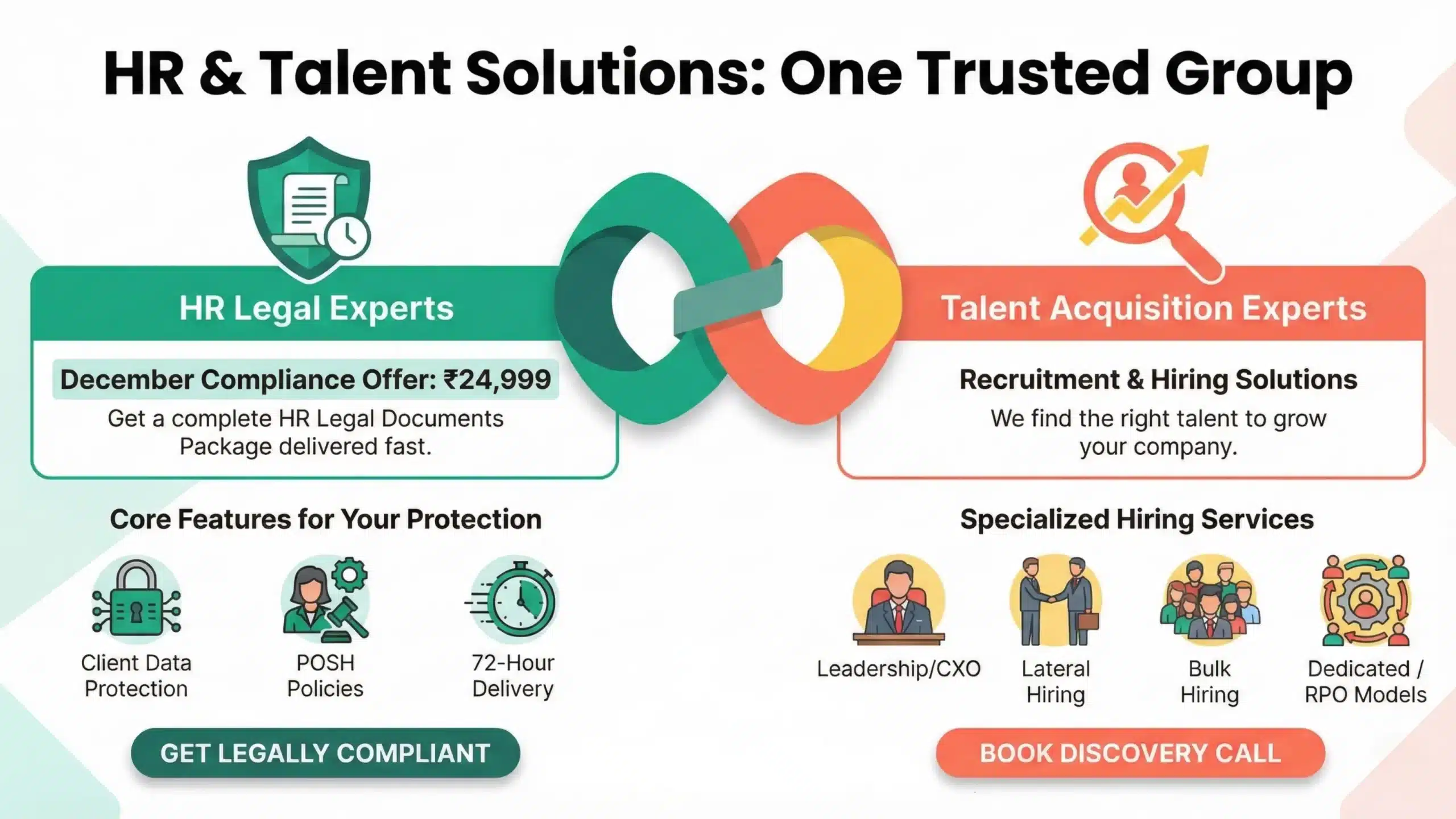Setting up a GCC in India is exciting—until you hit the wall.
That wall is people.
It’s easy to be optimistic when you see the headlines. India’s booming with talent. Over 1,600 global companies already run successful Global Capability Centers (GCCs) here. Whether you’re hiring for engineering, analytics, finance, or operations—India offers scale, speed, and ambition.
But when it comes to GCC hiring in India, hiring here isn’t just a numbers game. It’s a nuance game.
This isn’t about accessing a large pool of resumes. It’s about understanding how that pool thinks, works, leads, and grows.
Most GCCs come in with a confident six-month ramp-up plan. But by month three, many are already in damage control—firefighting mis-hires, rethinking leadership, and trying to fix what could’ve been avoided.
The ones who get it right localize from Day 1.
Investing in leadership early.
And they treat talent strategy not as a line item but as their go-to-market plan.
Table of Contents
ToggleWhy Do So Many GCCs Struggle to Build Strong Teams in India?
Let’s get honest.
Every month, another global brand launches its India GCC. By the sixth month, many are already stuck.
We’ve seen this firsthand:
- Team friction that won’t settle
- Key leadership exits within 3–4 months
- Critical roles staying open for 90+ days
- Full-blown restructures that tank morale and waste budget
It’s not because India lacks talent. It’s because companies walk in with copy-paste playbooks from HQ.
What goes wrong?
- They assume India’s talent market works like everywhere else.
- They use job descriptions that were written for a different context.
- They ignore cultural expectations around autonomy, decision-making, and growth.
The result?
- Mismatched hires.
- Confused reporting lines.
- Teams that look good on org charts but fail in execution.
Successful GCCs flip this script. They build for India.
They know that talent strategy isn’t just recruitment—it’s infrastructure. Every weak early hire delays execution and damages internal credibility.
If you’re a CXO or HR head tasked with building your India presence, don’t treat this like “just another market.” This is your chance to create something foundational—or fumble your first impression.
What Is a GCC Talent Strategy?
A talent strategy isn’t just about headcount planning or hiring faster.
It’s your blueprint to turn India into a center of excellence. It includes:
- Who you hire—not just by skill, but by leadership style, mindset, and cultural fluency.
- How fast you scale—without burning out early teams or breaking delivery.
- How you operate—including ownership models, decision rights, and alignment with HQ.
A real talent strategy considers people, structure, and scalability together.
And it starts from the top.
Because your first 90 days set the tone, if your leadership hires are unclear or misaligned, everything else slows down—culture, execution, even retention.
Why GCC Hiring in India Needs a Different Playbook
India’s talent depth is real:
- The world’s largest tech and digital workforce (NASSCOM, 2023)
- Over 1,600+ active GCCs, with another 50 expected in 2024
- Strong ecosystems in finance, analytics, digital ops, and product
But here’s the catch:
🚨 40% of new GCCs report poor retention or hiring delays in Year 1.
The issue was they walk in with strategies built for New York, London, or Singapore—and hope it sticks.
But India is different.
- Titles carry different weight here.
- Leaders expect real autonomy, not shadow roles.
- Career paths are closely tied to purpose and visibility.
Copy-paste job roles won’t work.
Neither will one-size-fits-all hiring partners.
You need a playbook that reflects local dynamics—and builds for speed, credibility, and stickiness.
What Should a GCC Hiring Strategy in India Actually Include?
1. Hire Leadership First, Not Last
The biggest myth? “We’ll hire execution teams first, then plug in leaders.”
That’s a trap.
When you delay leadership hiring, you end up:
- Creating culture without a compass
- Micromanaging from HQ
- Losing time to rehire or restructure later
Flip it.
Hire your India lead early—someone who gets both the Indian talent landscape and your global charter. Our leadership hiring approach is built exactly for this—CXOs who can align local execution with international vision.
Then build a strategic core team within 30–60 days. These are not just function heads—they’re your stabilizers, translators, and culture carriers.
2. Ditch Generic Recruiters
This is not the time for one-size-fits-all recruitment firms.
You need a partner who:
- Understands GCC evolution cycles
- Gets functional depth across tech, ops, analytics, finance
- Aligns hiring to business outcomes—not just resumes
Don’t just hire people. Build a system to attract the right kind of people.
3. Design Roles for Retention
Execution-only roles don’t retain leaders.
If your new joiners are:
- Reporting to five people across time zones
- Disconnected from key decisions
- Unsure of their growth path
…they will leave.
Instead, design every role with:
- Clear ownership
- Internal visibility
- Career mobility
Don’t just ask “what will they deliver?”
Ask, “Why would they stay?
How Long Should It Take to Build a GCC Team in India?
Without a strategy:
Expect 6–12 months of trial and error, rehiring, and missed goals. You’ll waste energy, morale, and trust.
With a focused hiring partner, especially one experienced in scaling GCCs end-to-end:
- Leadership layer: 30–60 days
- Critical mass for scale: 90–120 days
Real example?
One of our fintech clients hired seven leadership roles across tech, HR, and ops in just 42 days.
They didn’t start faster by luck. They started sharper.
Where Most GCCs Go Wrong (and How to Avoid It)
Here’s what we see too often:
❌ Hiring only from big MNCs
Brand pedigree ≠ adaptability. You need people who can build, not just maintain.
❌ Speed over fit
Mis-hires cost you more than time—they cost you trust. Slow down to hire right.
❌ No decision clarity
Is HQ approving final hires? Is it India? Who owns outcomes?
Define this early. Or risk losing top candidates in the process.
What Roles Should Be Prioritized in a New GCC?
Think beyond function. Think structure.
Core roles to lock down in Phase 1:
- India Site Leader/Country Head
- Tech or Engineering Lead
- HR Head/Talent Acquisition Partner
- Finance or FP&A Lead
- Program Managers/Business Integration
You’re setting up levers for scale rather than just filling chairs.
How to Attract Senior Talent to Your New GCC
Remember: You’re already competing with every big brand in India.
To win talent, offer clarity and value from Day 1:
✅ Decision-making autonomy
✅ Visibility with global teams
✅ Charter clarity
✅ Real opportunity to build and influence
And communicate it through job descriptions, interviews, and onboarding.
"If your Job Description is vague, your Talent Pipeline will be too."
Final Word: Treat Talent Strategy Like a Business Strategy
Your GCC’s success in India hinges on one thing: people.
You can’t afford to get hiring wrong.
Because mis-hires don’t just delay—they compound.
Build your hiring strategy like you build your product:
With clarity, iteration, and leadership.
In GCC hiring in India, your first 5–10 hires define the next 500.
Here’s how we help you get them right.
Curious if your hiring playbook will work in India?
Let’s talk.

Corporate Stalwarts is a trusted recruitment firm with 20+ years of expertise in executive search and leadership hiring.
We’ve placed 10,000+ candidates across 600+ companies in FMCG, Manufacturing, IT, Pharma, and more. Our 1M+ candidate pool and 48-hour turnaround enable fast, high-quality hiring solutions.
We help businesses build high-performance teams with precision, speed, and industry expertise.





